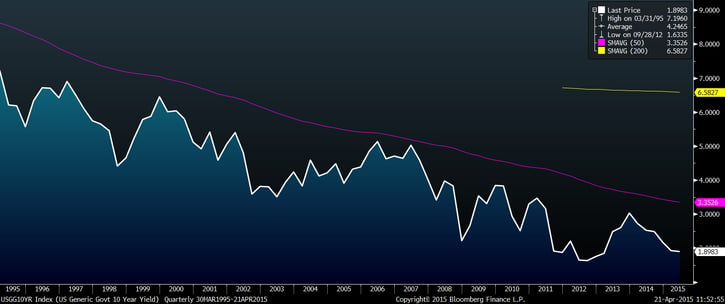Over ONE TRILLION DOLLARS is managed by the top ten bond mutual funds, according to Forbes. This vast pool of assets controlled by a few players affects the whole asset class. In our whitepaper, "Bondmageddon: A Whitepaper on the Hidden Risks and Costs of Bond Mutual Funds," we discuss the current landscape of these investments and the risks investors face today. We also outline the five critical strategic considerations we make when constructing a bond portfolio.
Introduction
Many investors choose to invest in traditional bonds, also called notes or issues, which are issued by governments and companies that need to raise capital. Institutional and professional investors will often select bonds because of their stability and dependable interest payment schedule. A bond mutual fund, or bond fund, on the other hand, is a fund that consists primarily of bonds along with other debt instruments from a variety of issuers. The precise components of the fund will depend on its purpose and objectives, but investments may include government, corporate, municipal and convertible bonds, and possibly other debt instruments like mortgage-backed securities. These can be appealing to smaller investors because they are more affordable. (A mutual bond fund is different than a Bond ETF, or exchange-traded fund.)
Bonds have a place in many client portfolios to balance risk, provide stability and provide income. However, bond funds may introduce the very risk bonds are designed to avoid—principal risk.

Image: 10 Year Treasury Yield 03/31/1995 -04/21/2015 Low yields on US Government T bills have sent some investors looking for other bond options, such as bond mutual funds. (Source: Bloomberg)
Concentration at the Top
There are many different kinds of risk presented by bond mutual funds. We think one catalyst of bond risk is that a few massive mutual fund companies dominate the amount of assets in bond funds. Consider this: The top ten largest bond funds in the U.S. control over $1 trillion in assets, according to Forbes. The demand for bonds generated by these large players has helped create artificially high prices for bonds, particularly those at the high end of the quality spectrum. Also, due to the sheer amount of capital these bond managers must allocate, they are constantly snatching up the most liquid and most widely available issues. This further exacerbates prices to rise to unprecedented levels. For example, Apple Corporation, considered one of the highest quality companies with the largest market capitalization as of this writing, was able to issue recently 30-year notes for a paltry 3.45% yield to maturity, or YTM. This YTM is the return anticipated on an Apple bond if it were held for 30 years.
Conclusion
Smaller issues with relatively attractive yields are often overlooked by these funds. Managers of these juggernauts simply have too much capital to invest in these issues. For individual investors, the primary risk in this scenario is opportunity risk. To read about other risks investors face with bond funds, read our whitepaper.
Without consideration of the risks and hidden costs of bond mutual funds, investors may find their hard earned dollars in a frightful scenario: Bondmageddon.
As always, you can contact us to discuss your portfolio.
Disclosure Statement The opinions presented in this paper are subject to change without notice in reaction to shifting market conditions. The information provided here is for general informational purposes only, and should not be considered a solicitation to effect transactions in securities, or personalized investment advice. Each investor needs to review an investment strategy and their asset allocation for his or her own particular situation before making any investment decisions.



